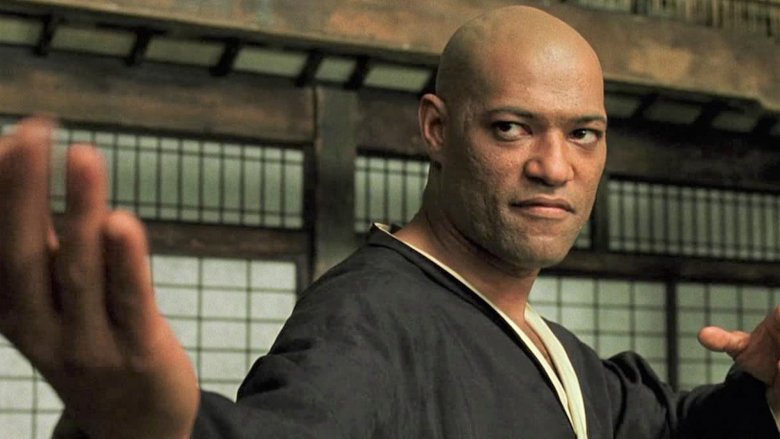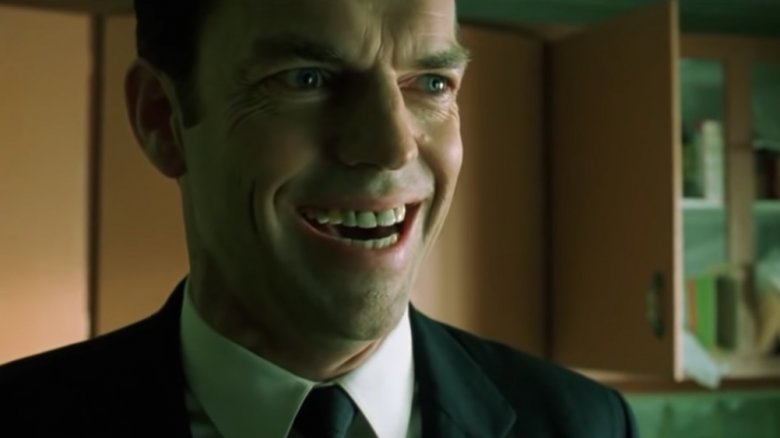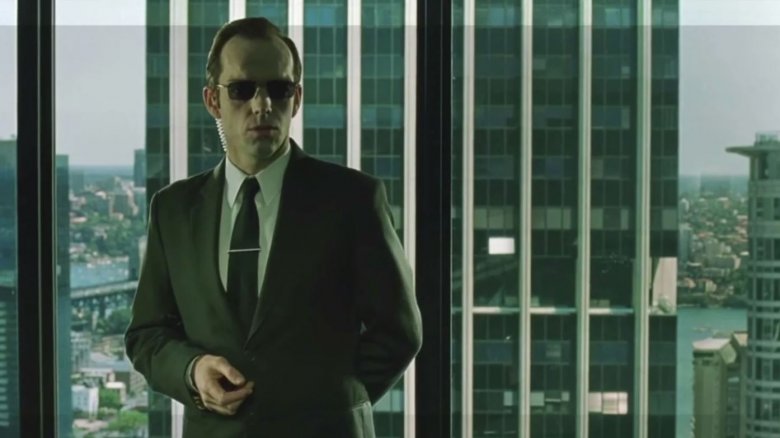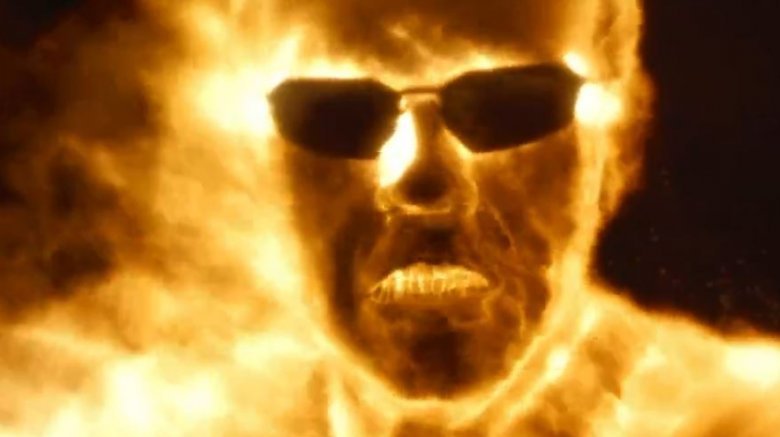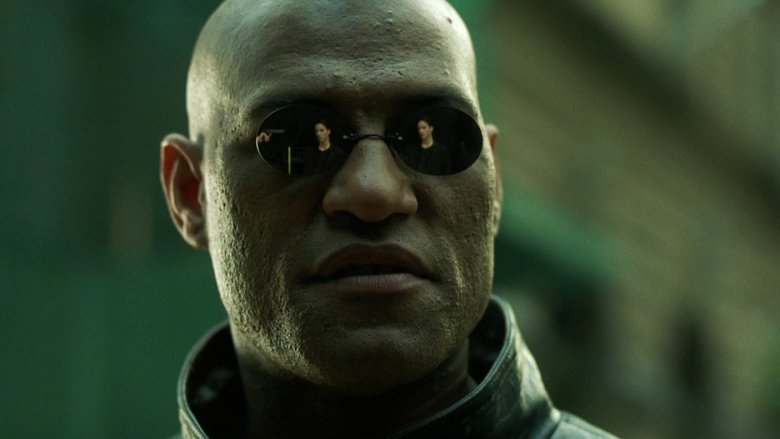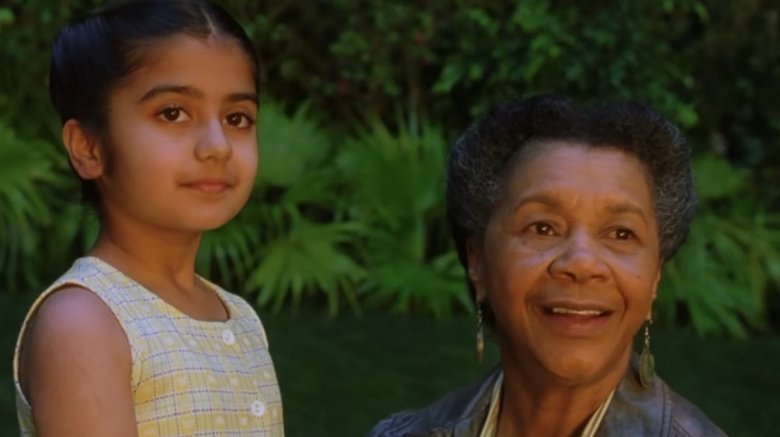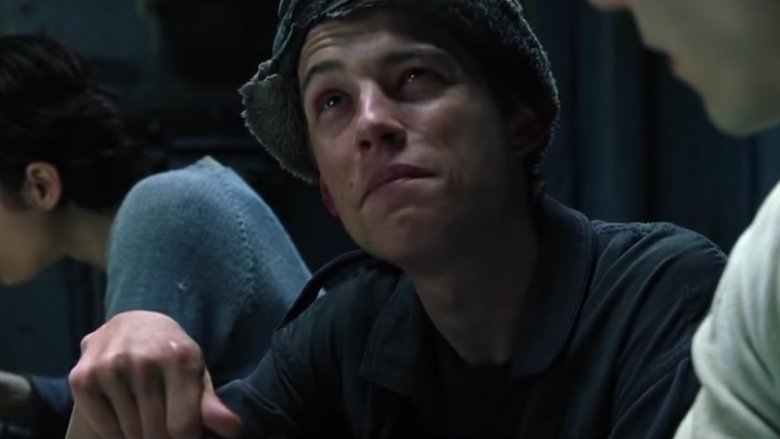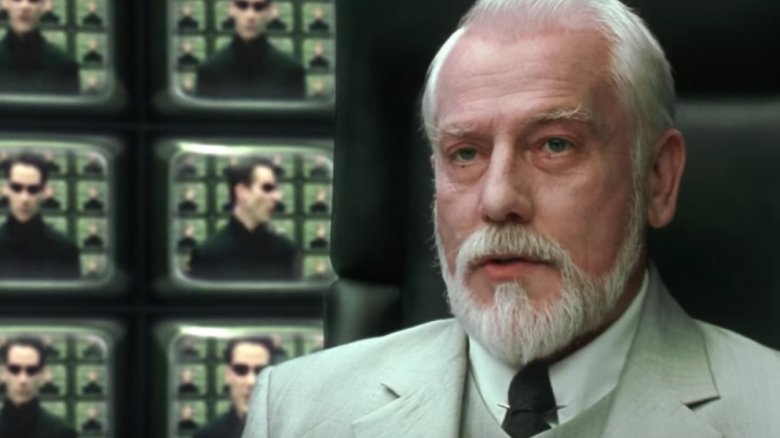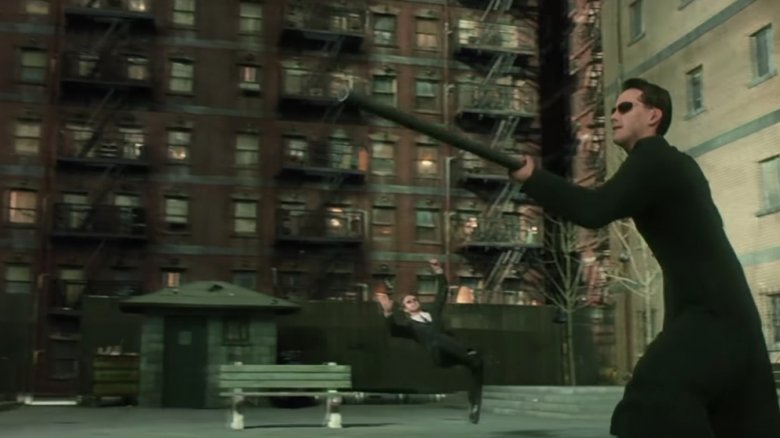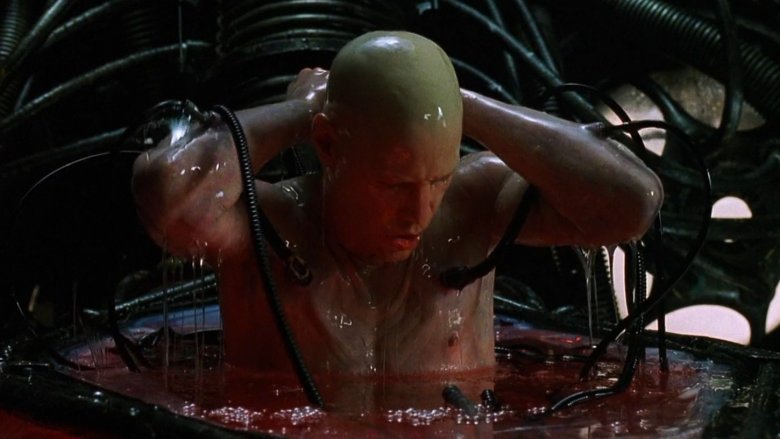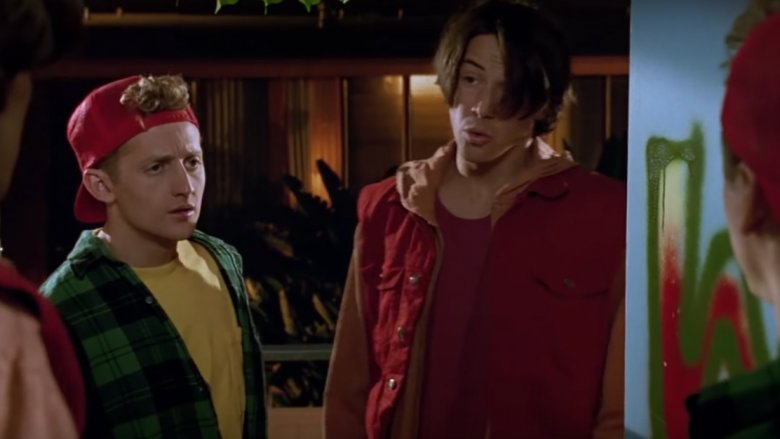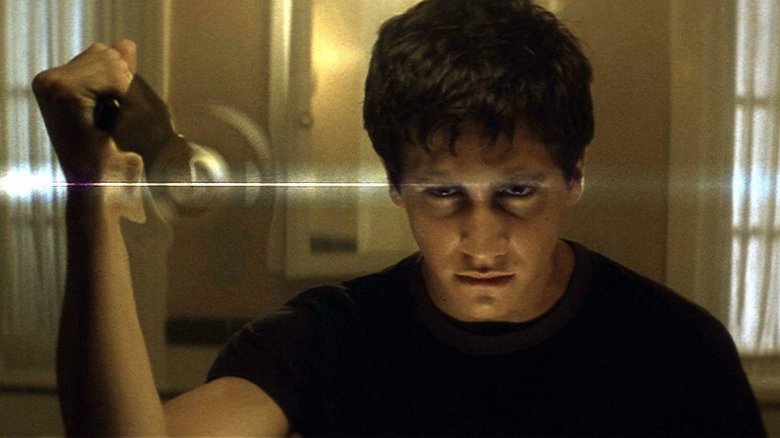Matrix Theories That Would Change Everything
We, the people of the internet, love to pick at our favorite films like teenagers with a fresh tattoo, yanking at their narrative structures until they no longer resemble the cohesive image of their original design. Call it boredom, obsession, or a loving desire to more deeply understand the stories that we dig. Whatever causes this curiosity of human behavior, it can lead to some entertaining results. Case in point? That great punching bag of misunderstood billion dollar blockbusters, the Matrix trilogy.
At its core, the Matrix franchise is built on the two things that every conspiracy theorist loves: a stalwart belief that the world is a lie and very shaky details. Maybe that's why 20 years on, it remains one of the world's most prominent hubs for pop culture fan theory enthusiasm. After more than two decades, people are still analyzing every frame and perceived undertone, and friends? Things get bonkers. Get ready to question your reality — or at the very least, whether there was a deeper meaning to those chocolate chip cookies all along — as we look at the Matrix theories that would change everything.
It's all real, and you're falling for it
As regular internet users know, there's a happy contingent of moviegoers in the world who take a great deal of personal pride in being able to poke holes in a film's plot using an arsenal of boring, complicated tools like "science" and "reality." These are the folks who spend their days picking apart the minutiae of a flick, pointing and going, "That's dumb."
One of their favorite targets is the Matrix franchise's claim that humans are being used to generate bioelectric power for the Machines. The nerd community was quick to point out that this was inefficient, since a person's body would, by necessity, consume more power than it could ever put out. It'd be a little bit like trying to run a battery charger on the batteries it was charging.
But what if we told you that all of that was a lie? What if humans actually do produce the energy necessary to juice up a robot army and the world's most malevolent Second Life server? It sounds crazy, but there's a solid explanation for why we wouldn't know about it. According to one theory on Reddit, we're all living in the Matrix right this second, and our robot overlords have programmed the simulation to make it seem like we generate less power than we actually do. The purpose? Plausible deniability, and an easy way to throw us off the scent, keeping us from ever taking the all-too real Matrix stories too seriously.
Agent Smith is the One
According to a long-running fan theory, Neo was never the One at all. Sound crazy? Then think about the parameters that Morpheus lays out for his cyberpunk messiah. He says that the One was born inside the Matrix, has the ability to change the Matrix's code, and would eventually destroy the system. While that might sound like Neo at first glance, putting a little bit of thought into it puts some dents in the description.
Neo wasn't technically born in the Matrix. Instead, he was born in a goo pod and then jacked in. He can do some wild stuff while he's on the inside, but we never really see him change the Matrix itself, just the things he can do when he's plugged up. And as far as destroying the Matrix goes, he definitely chipped in, but can we really say that he was 100 percent responsible for shutting everything down? Obviously, the descriptions of the One don't fit Neo like a glove. Not the way they do Agent Smith.
Born in the Matrix? Check. Able to change its code? That's all the guy does in movies two and three. And even before he gets reintegrated with the Source at the end of Revolutions, Smith has caused more damage to the overall program than a baby boomer opening every email in their spam folder.
The Matrixception theory
What if the human city of Zion, the real world in which it exists, and all of its dewy, dubstep bro-downs were never real at all? What if they were just another layer of the simulation?
Popularly (as these things go) referred to as the "Matrix in a Matrix" theory, this line of thought takes us in a decidedly trippy direction. Maybe even the people who "know the truth" don't know the truth. Maybe the Matrix is a matryoshka doll of false realities, all built inside of one another to ensure that nobody can ever truly escape. Proponents of the theory point to a couple of issues in The Matrix Reloaded. The first is the apparent ease with which Smith manages to possess the body of Bane in the "real world." Even with all of his new power, transcending the digital plane and rewiring a human brain doesn't seem like the sort of thing that a glorified Trojan Horse virus should be able to do.
The second and more damning piece of evidence comes from the One himself. At the end of Reloaded and again throughout Revolutions, Neo manages to control Sentinel robots outside of the Matrix, which, even with a healthy extension of disbelief, seems like a weird new skill set to develop. Also, if it really was the real world, how did Neo get back into the program after passing out at the end of Reloaded?
Morpheus is the real villain of The Matrix
Morpheus is in that top tier of fictional mentors who will exist forever in the minds of audiences, like Obi-Wan or Master Splinter. Too bad he might've been the bad guy all along.
This one gets complicated, but as posted by a user named KGBkid in a dissertation-level essay, it all starts with Morpheus' ship, the Nebuchadnezzar. Historically, Nebuchadnezzar was the king of Babylon and, more importantly to the theory, the man responsible for the enslavement of the people of the kingdom of Jerusalem, also referred to as (wait for it) Zion. Want to see how far the rabbit hole goes? Then you should also know that "Morpheus" is the name of the Greek god of dreams.
The theory goes that one of two things could be going on. Either Morpheus is a human who was sucked in by the machines just like Cypher in the first movie, or the real world is actually part of the Matrix, and Morpheus is just another program. His job? Keeping people convinced that they've made their escape, feeding them misinformation, and essentially, controlling their dreams. Creepy.
Sati is the new Oracle
One of the most popular complaints about the third Matrix movie is that it lacked what critics like to call "shooty 'splodey boom time." While the first two pictures in the series had their fingers on the pulse of audiences' love of watching stuff blow up, part three was more focused on thoughtful chats, Christ allegories, and the fact that some programs will do anything to get their kids into a good school.
What was the deal with the little girl who Neo runs into in the train station, anyway? Sure, a humanizing moment for the perceived villains of the film is always welcome, but it seemed like a lot of time was dedicated to Sati and her family. According to one theory, that's because she was a lot more important than you might've realized.
See, some folks are of the opinion that Sati isn't the purposeless program that her dad makes her out to be. Maybe, they posit, she's a potential upgrade to the Oracle. First of all, it's said that her mother was a software engineer, which would certainly help. But let's not forget what the Wachowskis love best: symbolism.
During The Matrix Revolutions, we get to see Sati helping the Oracle to make cookies. Cute? Certainly. But it could also be an image of a young program with a lot of importance partaking in an act of creation with the mother of the Matrix.
Star Wars is part of the Matrix
This one might be a little less "mind blowing" and a little more "hey, fun coincidence," but here it goes.
Maybe, just maybe, Star Wars is just another level of the Matrix. We'll give the nerds in the crowd a minute to calm down before we continue.
It all comes down to this one scene in Attack of the Clones. After Obi-Wan and Anakin chase an assassin into a bar, Kenobi is approached by a dude in the business of dealing death sticks. Old Ben does some mind trickery, and the misguided youth goes on his merry way, but wait. Eagle-eyed viewers might notice that the death stick entrepreneur is played by none other than Matt Doran, the actor who played Nebuchadnezzar alum Mouse in the first Matrix movie. You might remember him as the guy who gets excited about how he'd programmed the woman in the red dress in Neo's first training exercise/exposition overload. You might also recognize the woman in the red dress as Australian actress Fiona Johnson who, holy smokes, shows up in the same scene from Attack of the Clones as a bar patron.
So there you have it. Star Wars is a simulation in the Matrix. If you're not sold, you're just not buying.
The Architect gets building
One in the long line of theories devoted to explaining how Neo gets his real-world superpowers, this puppy gets sinister.
According to one YouTuber, Neo's meeting with the Architect in The Matrix Reloaded has more significance than we're led to believe. Everything that the Architect tells Neo is true. There have been six versions of the Matrix, and Neo has appeared in every one, eventually leading to a complete system reboot. What he doesn't tell Neo is that this time around, he's decided to use the One's penchant for choosing the door on the right to lure him into a trap. The Architect has made a whole new program, specifically designed to convince Neo that everything is going according to prophecy. It's a Matrix within the Matrix built only to make Neo think that he's an unbeatable messiah with abilities that extend into the real world. The theory also points out that from this point forward, there's a new Oracle, and that she speaks in a more condescending and long-winded fashion than we've seen before, leading the theorist to believe that she's actually the Architect in disguise.
And if that's not too weird for you, the whole thing spirals into an argument that the John Wick movies are all a part of Neo's new dream world.
A crazy Matrix theory about those awful graphics
If you keep a sharp eye and a keen wit about you, it's possible, just possible, that you noticed how the CGI in The Matrix Reloaded gets a little ... funky. The poster boy scene exhibiting this phenomenon has to be the fight between Neo and the army of Agent Smiths. Faces get rubbery, clothes sort of flap around like capes in a World War II-era superhero cartoon, and even the sound effects go weird. What most people would brush off as an unfortunate side effect of overly ambitious special effects before the art of computer animation had time to properly ripen, some Matrix fans have worked into an in-universe explanation.
According to one Reddit theory, the reason that things get all Scorpion King during this sequence is pretty straightforward: The Matrix itself is having rendering issues. The program was never designed to handle thousands of clones of the same character copying himself that many times, nor was it designed to allow for Neo's ability to change the laws of physics around himself. Put those two things together, and the simulation dropped the graphics setting so it wouldn't have to sacrifice frame rates.
Humanity won the machine war
In the years before the events of The Matrix, humanity went to war with the Machines, a race of self-aware robots. According to Morpheus, a series of atrocities later, mankind fell to the supremacy of their mechanical overlords and wound up plugged into generators, being used as batteries while schlepping through meaningless, simulated lives forced on them by their new masters.
But if one fan theory is to be believed, this wasn't what happened at all. Maybe, it hypothesizes, after humanity burned out the sky in their final desperate act, they really did beat the Machines. Maybe once the Machines surrendered, the humans, now living on a planet without any other means of survival, programmed their former adversaries to believe that they'd won the war. And maybe, just maybe, they continued to reprogram the robots to keep humans alive and happy in a simulated reality. Why else would the Machines put so much effort into making sure their sworn enemies were nice and comfortable?
Bill and Ted are part of the Matrix
There is a splinter cell of internet theorists who take great pride in being able to connect two seemingly unconnectable franchises by a thread of fuzzy logic like they're playing six degrees of separation with entire fictional universes. Sometimes it's obnoxious. Sometimes it means living in a beautiful world where The Matrix is a direct sequel to Bill and Ted's Bogus Journey. Now onward, into the realm of the totally bananas.
One Reddit poster believes, almost certainly correctly, that the adventures of Bill S. Preston and Theodore Logan dovetail with the Wachowskis' cyberpunk bullet storm. According to the theory, when Bill and Ted created benevolent robot versions of themselves to combat the evil robot versions of themselves, they started humanity on a path to true artificial intelligence.
Generations later, after man went to war with the Machines, the last remaining good robots still had an inkling of the kind men who created them, remembering them as heroes with a willingness to face death itself in order to triumph. Plus, their creators were befriended by an older man in strange sunglasses and a long coat, with a predilection for telephones. In reverence to these titans, the Machines modeled the One after one of them, and set him up to be mentored by a similar wise teacher. Only he, they believed, could bridge the gap between man and machine by teaching them all to be excellent to each other.
The Donnie Darko/Matrix theory
If you, like many of us, were an insufferable teenager with a lot of feelings and a DVD player in the early 2000s, there were really only a few games in town in terms of "expressing how deep you were by explaining heavy movies to people." One was The Matrix, certainly, and the other was Donnie Darko. And if could trim that list down to one movie to make more time for memorizing Puddle of Mudd lyrics, you might just be in luck.
As it turns out, there's a theory that Donnie Darko is just another iteration of the One program, and it's, you know, sort of compelling. The Reddit user who brought this line of thinking to the table points out that both Donnie and Neo are messiah figures sent on journeys of enlightenment by the image of a rabbit. They further point out that Grandma Death might just be another iteration of the Oracle, that Donnie's ability to see his "channel" could be his way of interpreting Matrix code, and that his (spoiler alert) death at the end of the film was his way of resetting the Matrix. There are also similarities between Gretchen and Trinity, in that their respective deaths wind up being the catalyzing incidents that send each movie's protagonist into an act of self-sacrifice.
